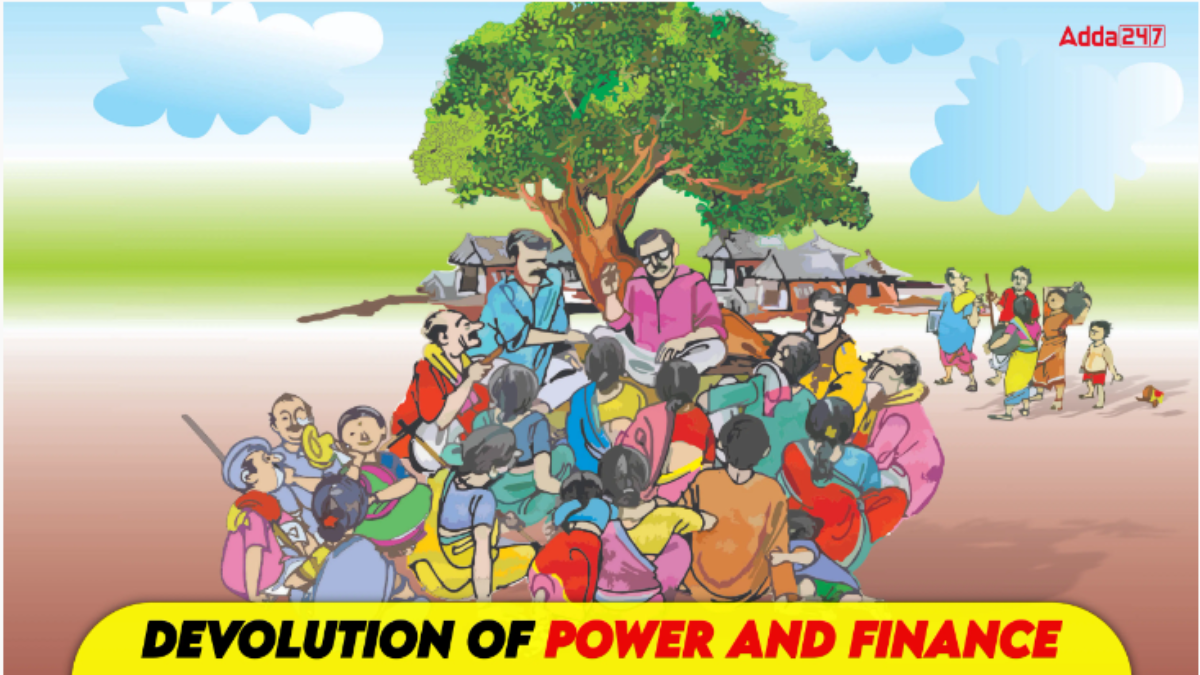Table of Contents
India, as a federal republic, has embarked on a notable path of devolving powers and finances to local levels, acknowledging the critical role of grassroots governance. This decentralization process is designed to empower local bodies, foster participatory democracy, and cater to the diverse needs of communities.
By shifting authority and resources closer to the people, India aims to enhance local governance, ensure more responsive and inclusive decision-making, and strengthen the overall democratic framework. This journey underscores India’s commitment to building a more equitable and efficient system where local entities are central in addressing community-specific issues and promoting development.
Devolution Of Finances
The devolution of powers and finances to local levels in India marks a crucial step toward inclusive and responsive governance. Despite notable achievements, persistent challenges still necessitate strategic interventions. To ensure the success of this transformative process, it is imperative to strengthen fiscal decentralization, enhance local capacities, ensure uniform devolution, and mitigate political interference.
The efforts towards effective devolution aim to realize the vision of empowered local self-governance, where local entities have the authority and resources to address community-specific needs effectively. Through continuous efforts, India can build a robust system that promotes participatory democracy and equitable development, ensuring that local bodies play a central role in governance and decision-making.
Methods Of Devolution of Power and Finances
After understanding the devolution of finances and powers we should now learn about the methods we have for the devolution of finance and power
- Constitutional Provisions – The Indian constitution decentralizes power between state and the ‘union’ government. It should be noted that when visionary leaders shaped the Indian constitution they had this in mind that’s the reason why Union is used instead of Central when referring to the government.
a) The 7th Schedule of the Indian Constitution provides lists of subjects under the purview of the Central and State governments.
b) The 6th Schedule of the Indian Constitution contains provisions related to the administration of Tribal Areas in the States of Assam, Meghalaya, Tripura, and Mizoram.
c) The 73rd and 74th Amendments to the Constitution of India in 1992 mandated the establishment of Panchayats and Municipalities, outlining their powers and functions.
d) The Panchayats (Extension to Scheduled Areas) Act, 1996, was passed by the central government to ensure residents of scheduled regions had access to self-government through Gram Sabhas.
- Fiscal powers: The Union Finance Commission recommends the distribution of financial resources between the Central and State governments, while the State Finance Commission recommends grants to local levels for various functions.
- Administrative decentralization involves the division of administrative and managerial powers among the Central, State governments, and local governments.
Devolution of Powers and Finances Issues and Challenges upsc
Devolving power from central to state governments is a crucial step toward balancing authority and promoting equality. However, this process comes with several challenges:
- Disparities in Population Data: Leaders from southern states argue that using 2011 data for financial allocation penalizes them, as these states have made significant progress in population control. This could impact their eligibility for rewards and benefits.
- Local Conflicts: Problems at the local level can escalate due to interventions by local leaders who might prioritize personal or political interests over community needs. This can lead to conflicts and inefficiencies in governance.
- Unequal Distribution: There is often an imbalance in the distribution of resources and responsibilities between local governments and panchayats, which hampers their ability to fulfill their responsibilities effectively.
- Impact of GST: The implementation of the Goods and Services Tax (GST) has reduced the autonomy of states to set their own tax rates. This forces states to rely more on central government funding for specific development needs.
- Challenges with Centrally Sponsored Schemes: Centrally Sponsored Schemes, which are funded by both the central and state governments in varying ratios (e.g., 50-50, 70-30, 80-20, or 90-10), can complicate resource utilization. States may find it challenging to use these funds effectively according to their specific needs.
These challenges highlight the complexities involved in the devolution of powers and finances, affecting both the efficiency and effectiveness of governance at various levels.
Impact of Devolution of Power and Finances
| S.NO. | NEGATIVE IMPACT |
| 1. | Local governments are ineffective in deployment as they lack capacity ad personnel. |
| 2. | State governments show resistance for devolution powers to local governments. |
| 3. | Devolution often leads to conflict among both state and local governments because of lack of coordination. |
| S.NO. | POSITIVE IMPACT |
| 1. | The devolution of 4 F’s i.e. Funds, function, functioning and functionality |
| 2. | Brings transparency and accountability in actions by governments. |
| 3. | Devolution has made government function more responsive and answerable. |



 TSPSC Group 1 Question Paper 2024, Downl...
TSPSC Group 1 Question Paper 2024, Downl...
 TSPSC Group 1 Answer key 2024 Out, Downl...
TSPSC Group 1 Answer key 2024 Out, Downl...
 UPSC Prelims 2024 Question Paper, Downlo...
UPSC Prelims 2024 Question Paper, Downlo...





